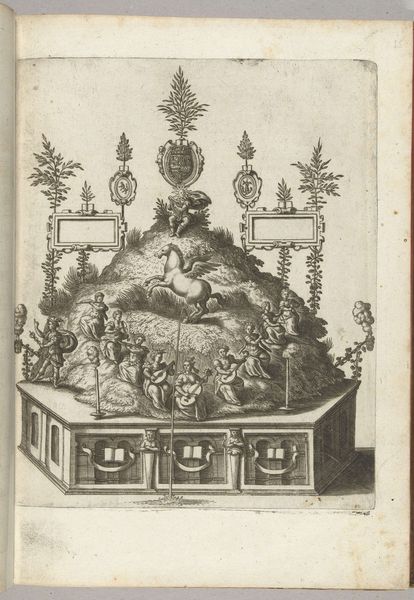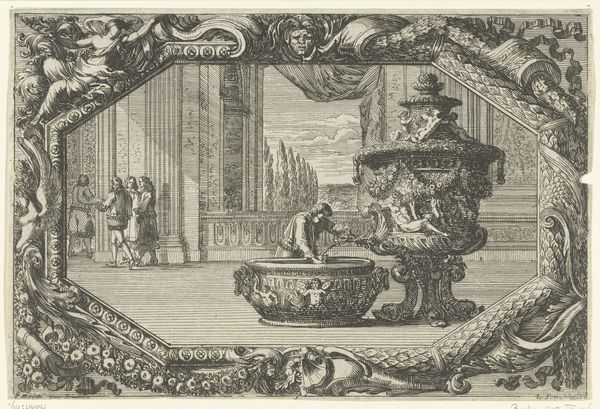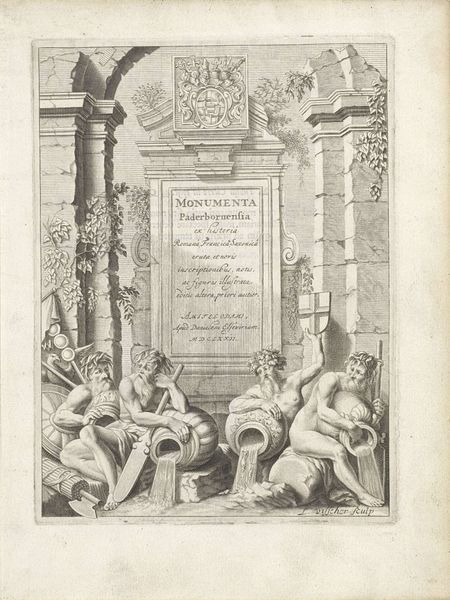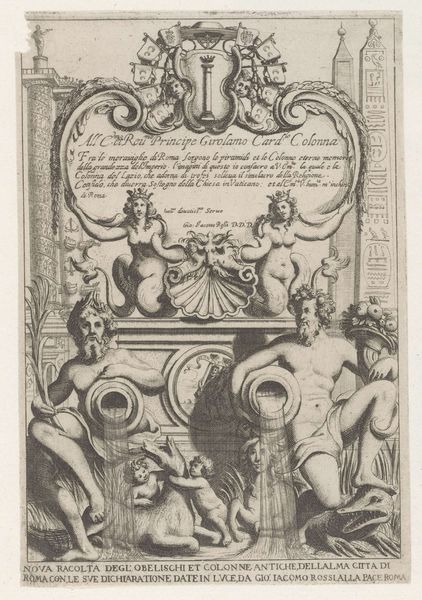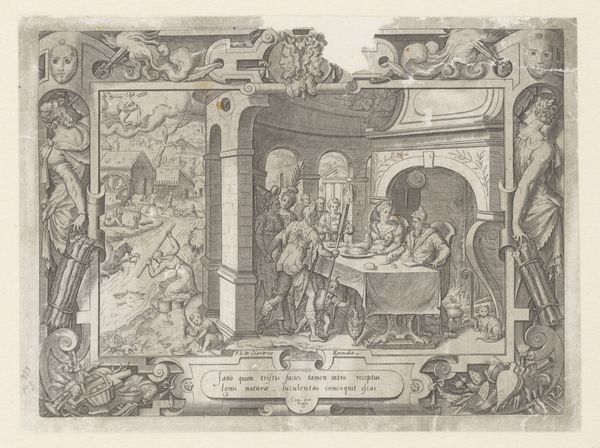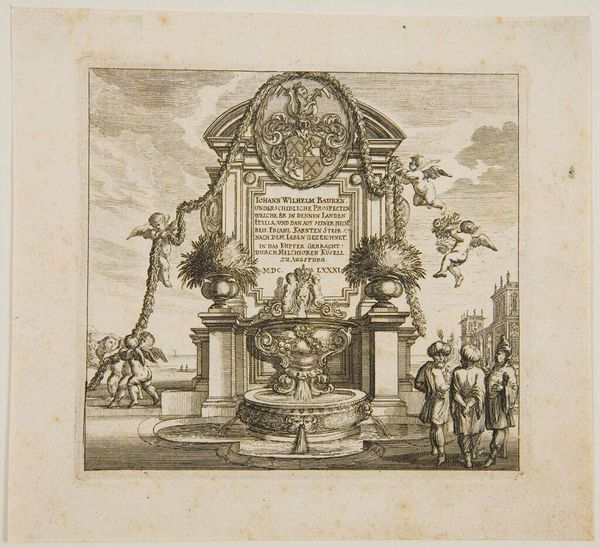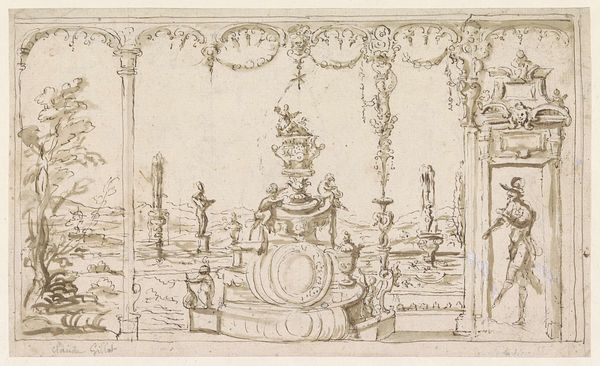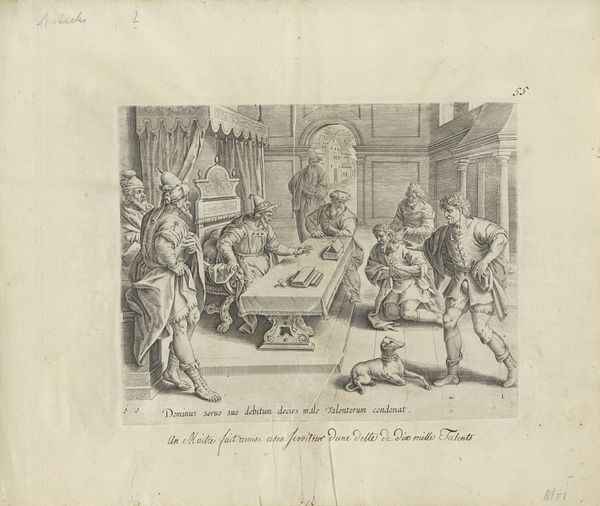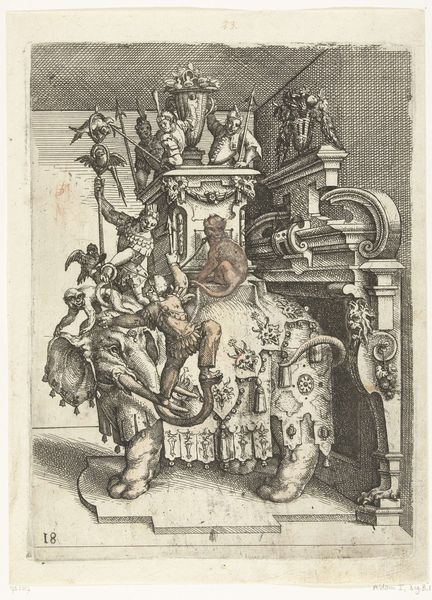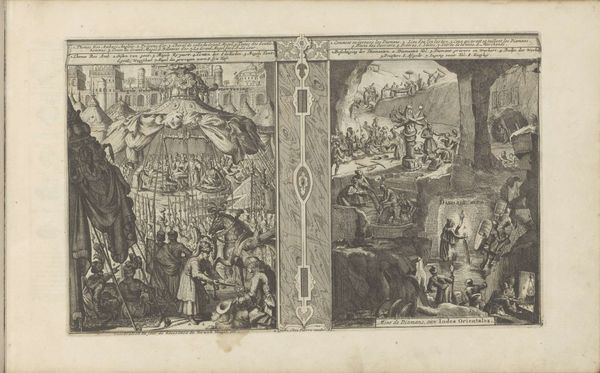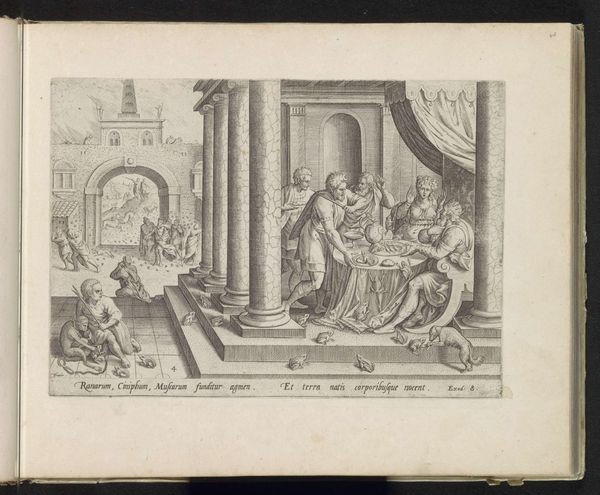
Titelblad van het pamflet Merckt de Wysheit vermaert vant Hollantsche huyshouwen en siet des luypaerts aert die niet is te vertrouwen, 1615 1615
0:00
0:00
willempieterszbuytewech
Rijksmuseum
drawing, print, ink, engraving
#
drawing
#
narrative-art
#
dutch-golden-age
#
mechanical pen drawing
# print
#
pen sketch
#
sketch book
#
landscape
#
figuration
#
personal sketchbook
#
ink
#
sketchwork
#
geometric
#
pen-ink sketch
#
line
#
pen work
#
sketchbook drawing
#
cityscape
#
storyboard and sketchbook work
#
sketchbook art
#
engraving
Dimensions: height 137 mm, width 176 mm
Copyright: Rijks Museum: Open Domain
Curator: Immediately striking is the stark contrast of black ink on this paper medium; the etching presents a visually arresting image—complex and unsettling. Editor: This is "Title page to the pamphlet Merckt de Wysheit vermaert vant Hollantsche huyshouwen en siet des luypaerts aert die niet is te vertrouwen," created in 1615 by Willem Pietersz. Buytewech, now residing at the Rijksmuseum. This work’s title roughly translates to “mark the famed wisdom of Dutch housekeeping and behold the leopard's nature, which is not to be trusted.” Curator: Fascinating title. Look at the way the artist utilizes line work. It reminds me of topographical maps but arranged to create distinct zones representing societal mistrust through detailed imagery. Editor: I agree. Given the pamphlet's context, this image likely critiqued social relations, using domestic imagery to express political commentary through print media. Note the workers and observers depicted. I imagine gender and class play crucial roles in Buytewech’s message about labor and warning against untrustworthy characters within society. Curator: And consider how class is portrayed. The detailed rendering offers social commentary, almost as a form of symbolic labor history etched into lines. Editor: The symbolism is potent: the guarded barriers, laborers tending plots and being watched, and even the presence of wild cats. These all contribute to a larger statement about risk and protection. It makes the viewer question not only the Dutch household of the time, but also the material conditions under which that house was upheld. Curator: There's such deliberate crafting. Note the balance in this pen and ink composition. Each element contributes to the construction of an allegorical framework on economic uncertainty and social risk during the Dutch Golden Age. Editor: Absolutely, Buytewech masterfully combined visual technique with socioeconomic insight. This work stands as a testament to the ways in which visual artists participated in social dialogues. Curator: Precisely. Thank you. Editor: My pleasure, a moment well spent with a piece so enmeshed in layers of meaning.
Comments
No comments
Be the first to comment and join the conversation on the ultimate creative platform.
